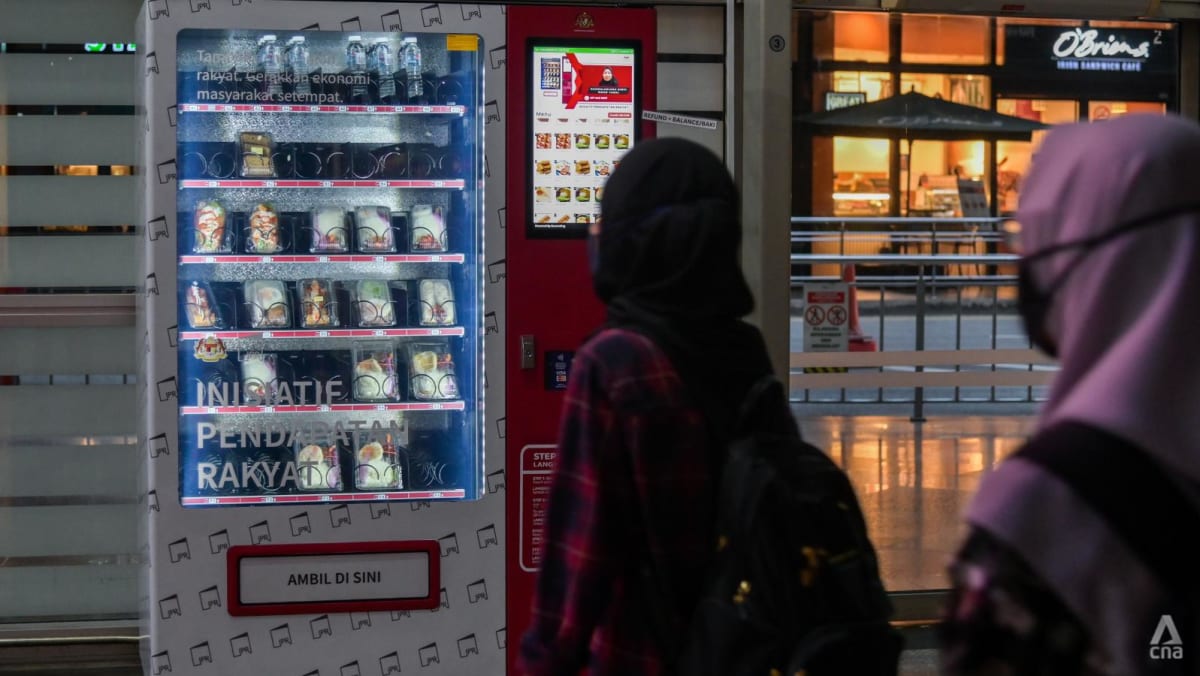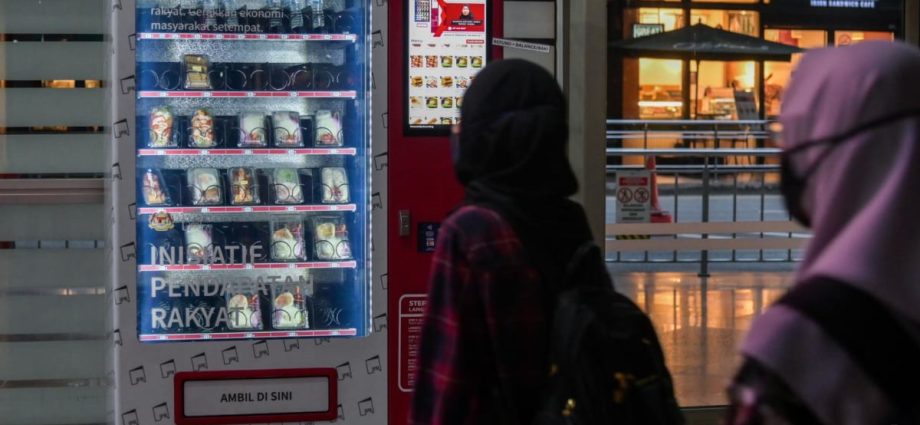
GOVERNMENT FOOTS VENDING MACHINE RENTAL
During the launch of the IPR project back in February, Economic Affairs Minister Rafizi Ramli had termed it a “fishing rod” for people to attain financial independence.
There are three thrusts to the project – namely the Food Entrepreneur Initiative (Insan), the Agro Entrepreneur Initiative (Intan), and the Services Operator Initiative (Ikhsan).
Amiruddin is a participant of the Insan initiative, which provides food entrepreneurs with a self-service vending machine to sell food and drinks at strategic locations around the country such as transportation hubs and hospitals.
He told CNA that he had applied for the initiative online after its launch.
As part of the initiative, the government pays for the monthly rental of the vending machine for two years, with the entrepreneur earning the profits from their sales. To keep prices affordable for consumers, packs of food sold have a cap of RM5 per box.
Amiruddin estimates that almost 90 per cent of the food is sold out daily, with the rest given to the homeless or for self-consumption.
There is a mobile application to monitor and track inventory and sales of the food, with participants able to top up boxes in the vending machines when stocks run low.
Amiruddin and his wife spend about two to three hours each day preparing the food, with Amiruddin admitting that it was tough at first. He and his wife have, however, gotten used to the routine.
“There is more continuity and sustainability in this programme compared to direct cash aid. There are many benefits for the community as the traders can earn more income while the public can purchase cheap meals,” he said, adding that he sells about 100 boxes of food a day.
As of June, over 10,000 people have signed up for the Insan program.
A total of 100 machines are operating, with the government targeting 5,000 of these machines to be up and running by the end of this year.

